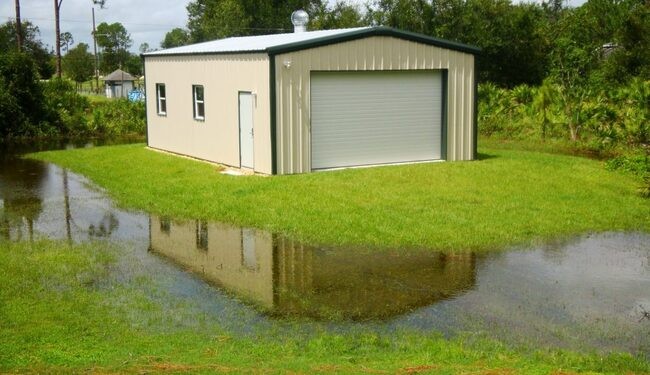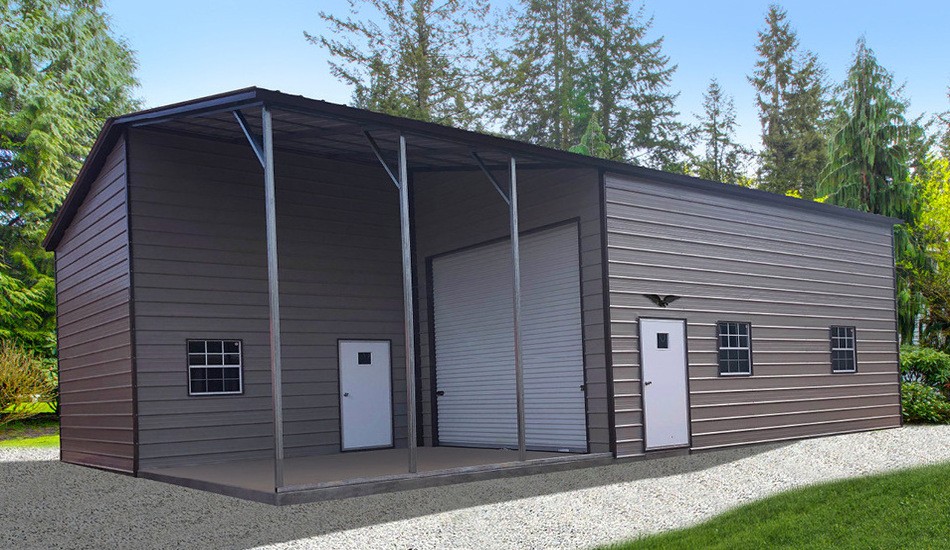No one wants to deal with the cost of damages after an intense hurricane or crazy wildfire. But how can you prepare for these natural disasters? Certain vendors invest in creating better building materials that can withstand severe storms.
For example, metal buildings provide an extra layer of durability that you can’t find in wood structures. Some benefits of having a metal building include:
- Increased wind resistance
- Protects occupants from lightning
- Ability to stay standing in Seismic Zone 4, an area prone to shifting ground
With a low electrical resistance, steel can spread a lightning strike, so no single area is extensively damaged. Steel also has the highest strength-to-weight ratio compared to other construction materials. Check out how metal buildings stand against traditional construction and even hurricanes below!
Why Metal Buildings Stand Up to Bad Weather Better Than Traditional Construction
Metal buildings can endure various types of bad weather better than other construction materials, including wood, brick, concrete, and stone.
Check out the pros and cons of the various construction materials in the following table:
| Building Material | Pros | Cons |
| Wood | – Treated lumber can withstand rainy weather for up to two years | – More vulnerable to water damage and fire- Susceptible to termites and rotting |
| Brick | – Flame retardant- Noncombustible- Ability to be hit by a high-speed object in strong winds | – More expensive- Requires replacement of mortar over time due to exposure of the elements |
| Concrete | – Durable and unyielding- Fire, rot, rusting, and erosion resistant | – Doesn’t absorb energy well and can crack during earthquakes- No insulation properties of its own |
| Stone | – Weather-resistant- Durable- Cost-effective- Easy maintenance | -Unyielding nature causes cracks and breaking during earthquakes |
| Metal | – Durable- Lower electrical resistance- Fire, rot, and erosion resistant- Flexible enough to stay standing during an earthquake- Easy maintenance- Higher melting points | – Unprotected metal can rust- Permanent builds are challenging to relocate |
Are Metal Buildings Safer Than Traditional Buildings?
While designing steel buildings, architects have a greater extent of flexibility compared to other materials. Thicker metal tends to be more powerful, thus increasing its safety properties.
Metal also has a higher melting point than items such as wood, which means lower insurance premiums and a better chance that your building won’t burn down as quickly. With more time to handle a burning building, firefighters are more likely to smother the flames before they cause too much damage.
Another advantage of metal buildings is their energy absorption. While concrete and stone tend to be extremely durable when items hit the sides, they don’t do as well when the ground shakes beneath the structure.
Metal structures are also able to disperse lightning because of their low electrical resistance. Concrete and wood, on the other hand, can face harsh damage when hit by lightning.
A common misconception is that metal attracts lightning more than other objects. John D. Cook shares an experiment where you can see that lightning doesn’t favor metal over other materials. You can check out the video here.
Metal Buildings vs. Hurricanes
Hurricanes have the potential to bring catastrophic damage when the conditions are just right. As a reminder, the Saffir-Simpson Hurricane Wind Scale rates hurricanes from Category 1-5 by wind speed:
- Category 1- 74 to 95 mph winds
- Category 2- 96 to 110 mph winds
- Category 3- 111 to 129 mph winds
- Category 4- 130 to 156 mph winds
- Category 5- 157 mph or greater winds
Between the strong winds and consistent rain, hurricanes can cause flash floods and tear trees from the ground. When metal buildings are adequately reinforced and engineered to handle hurricane-level winds, they can remain standing after harsh storms. Depending on the storm’s design and intensity, metal structures have proved capable of withstanding severe weather conditions.

Metal Construction Against Strong Winds
Remember Dorothy’s home in the Wizard of Oz? While it’s highly unlikely for a house to maintain its shape while squashing a witch, experiments show that steel constructions can withstand heavy winds. However, those metal constructions should be built to a certain code to withstand specific wind speeds.
BuildingsGuide shares that metal buildings today can withstand winds up to 170 mph. Talk about sturdy!
Remember: while metal is capable of handling strong winds, other factors such as thickness, shape, size, and support also play a role in the overall strength of the metal building.
Construction of Metal Structures Using Wind Ratings
Typical wood-frame construction projects aren’t as long-lasting, dependable, or ecological as are pre-engineered metal structures. They’re not only subject to wood rot and termites, but they’re also not built to withstand severe winds and driving rain. Most steel constructions are manufactured from the highest-quality galvanized steel components available today, allowing them to survive harsh weather. Though we cannot promise that your structure will remain standing during severe hurricanes or tornadoes, it can be engineered to resist higher than typical wind and snow loads.
To Conclude
There are many reasons why metal buildings are a go-to material when building. Some advantages of metal structures include:
- Durability
- Lower electrical resistance
- Flame resistant
- Easy to maintain
- Will bend rather than break during an earthquake
- Higher melting point than other material
- Erosion and rot-resistant
- Handles hurricanes and strong winds better than other structures



Recent Comments